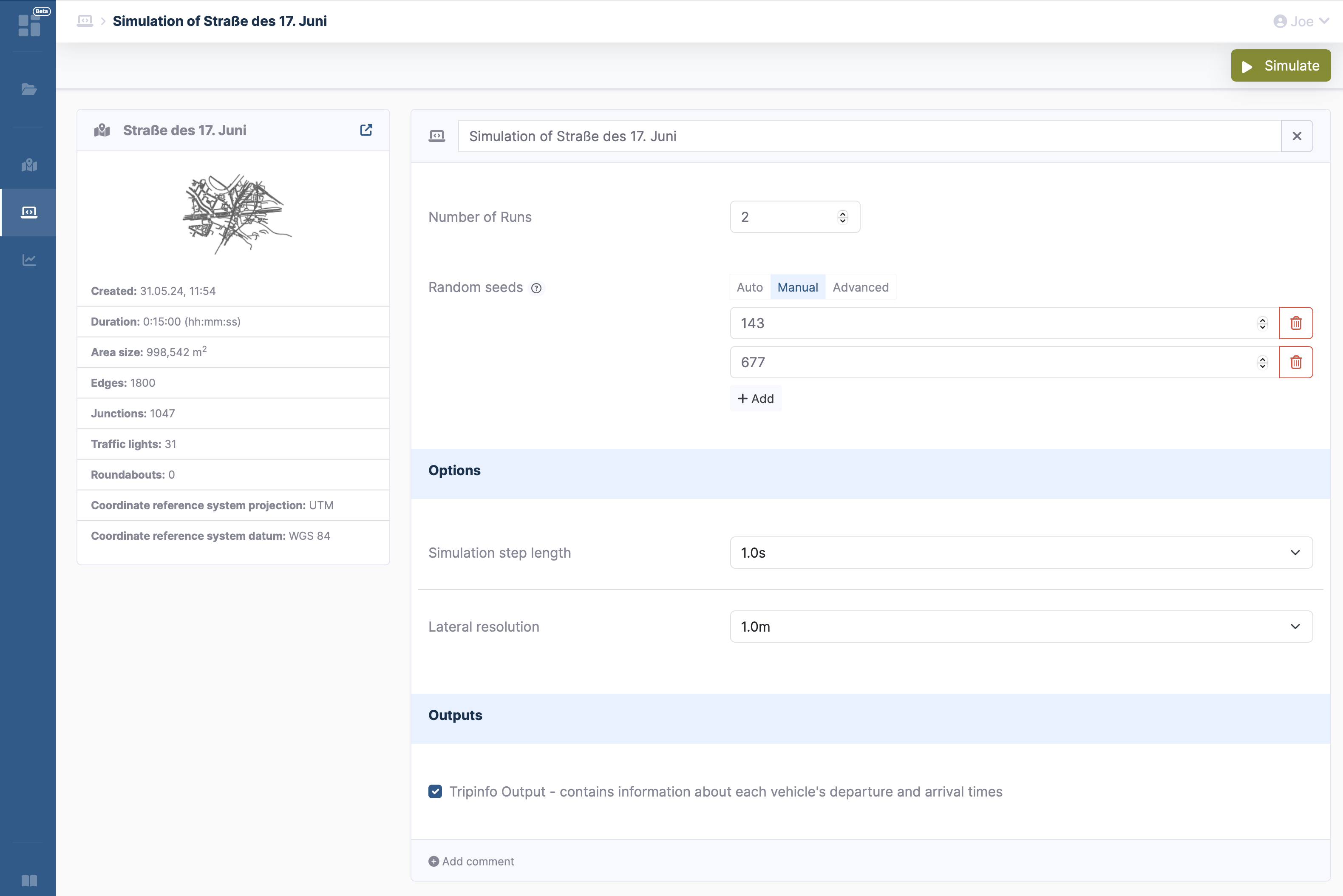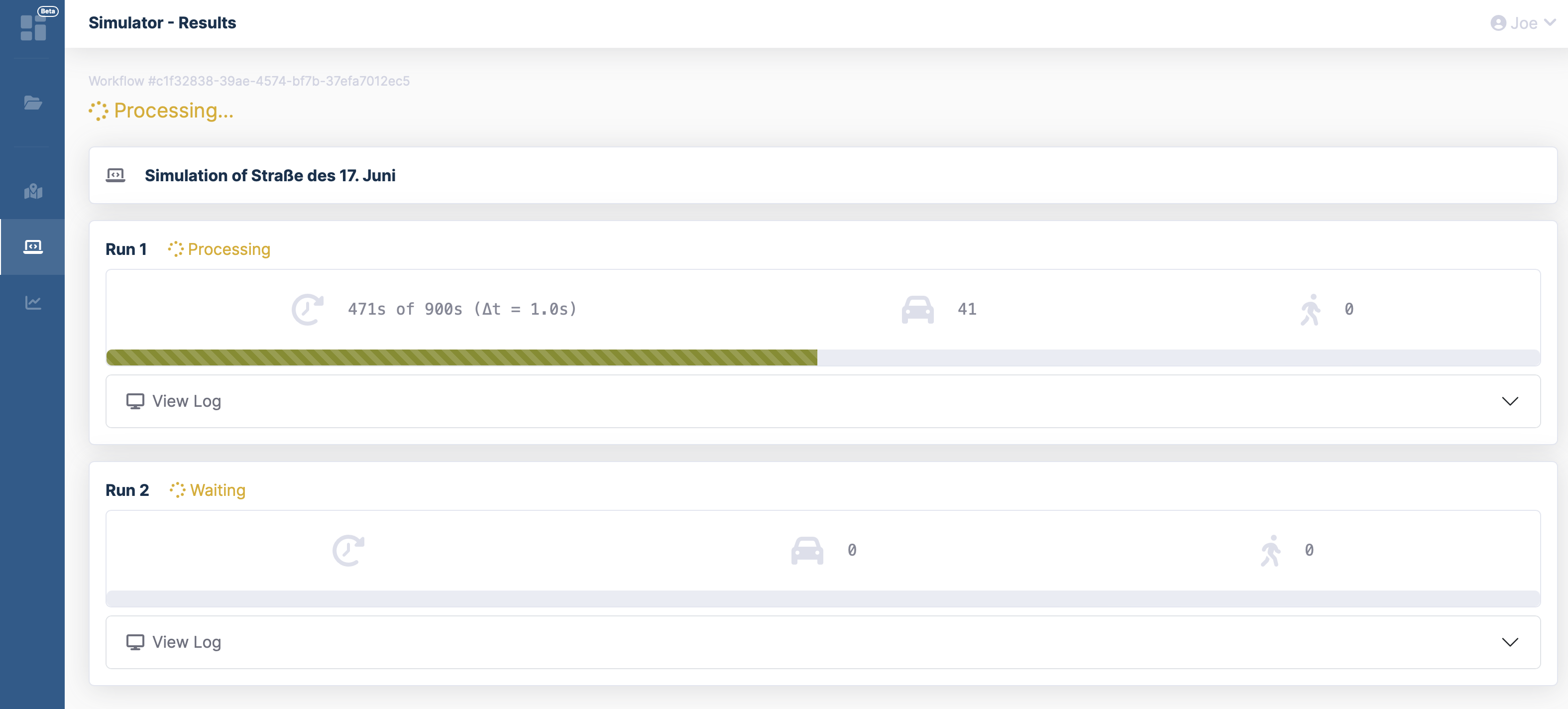Simulator
Scenario Selection
After clicking on the icon for the Simulator in the side bar, a table opens containing all scenarios in the current user's workspace. A click on the tab labeled "Built-in Scenarios" switches the view to the list of all available built-in scenarios in SESAM. To proceed, one of the user-created or built-in scenarios must be selected before clicking on the button labeled Configure.

Simulation Configuration
During the second step of the simulation process, users are presented with the option to configure their simulation. They can begin by setting a name for their simulation, with the input field pre-filled with a default name.
Users can specify the number of simulation runs to be performed for a given scenario. Each run can be assigned a custom or automatically selected seed value for the random number generator, allowing for a broad coverage of the stochasticity within the possibility space of the simulation.
On the left-hand side of the screen, users can review the essential characteristics of the selected scenario. This helps ensure that the simulation is properly configured based on the user's chosen scenario.

Options
The set of options refer to the time step length and lateral resolution of the simulation. The time step length determines the duration of each simulation step. For most scenarios, a time step length of 1.0 s should suffice. However, users may choose other values based on their needs.
The lateral resolution determines the spatial resolution of the edges in the lateral direction. For many scenarios, this feature may not be required and should be disabled to improve the performance of the simulation. However, if it is necessary to subdivide individual lanes more finely - for instance, to allow two bicycles to pass each other in the same lane - then an appropriate value can be selected here.
Note
The permissible range of values for the time step length and the lateral resolution is determined by the scenario and may vary from one scenario to another.
Outputs
Finally, the outputs of SUMO can be enabled or disabled. Most available outputs are required to be enabled by default, because they are necessary for key features in the Analyzer of SESAM. However, the tripinfo output is optional and can be disabled if its contents is not needed.
The simulation is started by clicking on the button with the label Simulate.
Result page
The simulation workflow can include multiple runs, each of which is now individually represented.

For each run, the current status is depicted by a progress bar and a detailed log output. In addition to the current simulation of each run step, the amount of active vehicles and active persons in the simulation run is provided for reference. This allows the user to track the progress of the simulation more easily.
Once the the entire simulation workflow has successfully completed, the user can proceed to analyze the results or download all simulation outputs as a ZIP archive.